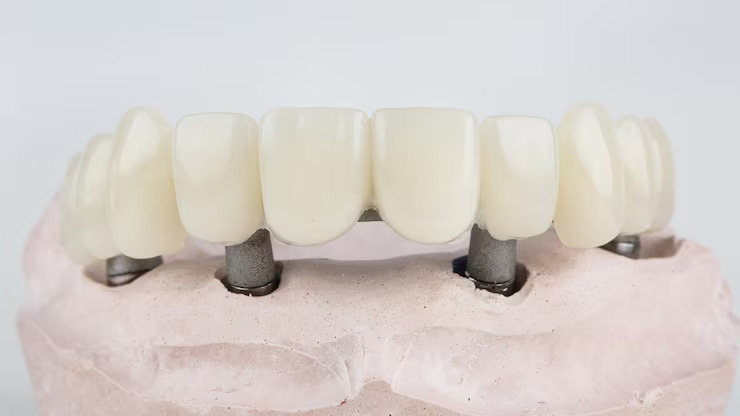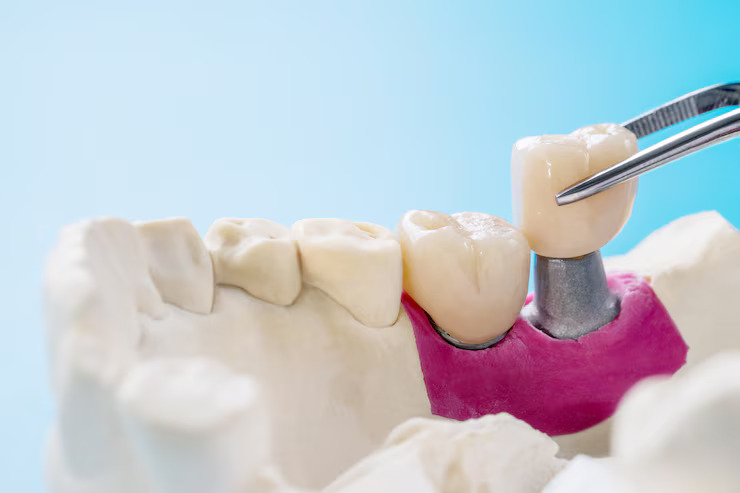Self-Ligating Braces come either in traditional metal, ceramic or clear brackets and are made from the same materials as traditional braces. These type of braces deliver quick results and don’t have to visit your Orthodontist frequently. Self-ligating braces eliminate the need for bands and that makes it different from standard braces.
Self-ligating clear braces are a modern advancement in orthodontics that use a specialized clip instead of traditional elastic bands to hold the archwire in place. This innovation results in a more comfortable and efficient teeth-straightening experience. Made from transparent or tooth-colored materials, they provide a discreet and aesthetically pleasing option for patients looking to improve their smile.

The dentist will assess your oral health, take X-rays, and determine if a dental bridge is the right option for you.
The teeth adjacent to the missing tooth (abutment teeth) are reshaped to fit crowns.
An impression of your teeth is taken to custom-make the bridge for a perfect fit.
A temporary bridge may be placed to protect your prepared teeth while the permanent one is being made.
Once ready, the dentist will adjust and cement the bridge in place for optimal function and aesthetics.
Dental Bridges may be recommended for the following reasons:

With good oral hygiene and regular dental checkups, dental bridges can last 10–15 years or longer.
No, traditional bridges are fixed and can only be removed by a dentist.
The procedure is generally painless, as it is performed under local anesthesia. Some mild discomfort may follow but usually subsides quickly.
Yes. Once your bridge is properly fitted, you can enjoy most of your favorite foods.
Brush and floss daily, avoid hard foods, and visit your dentist regularly to keep the bridge and supporting teeth healthy.